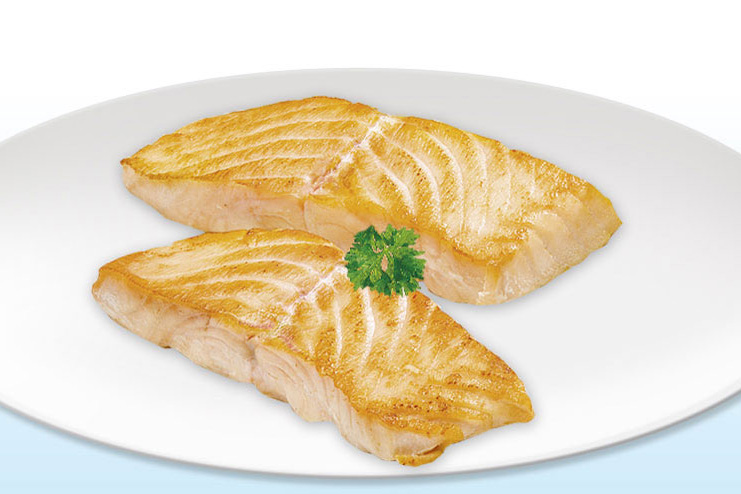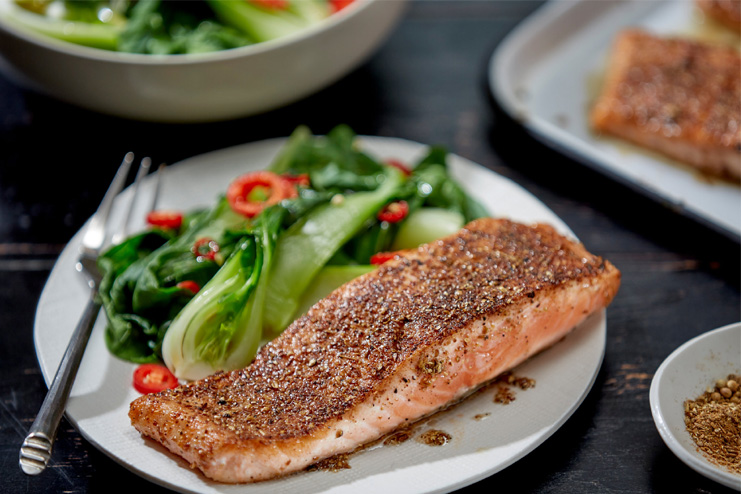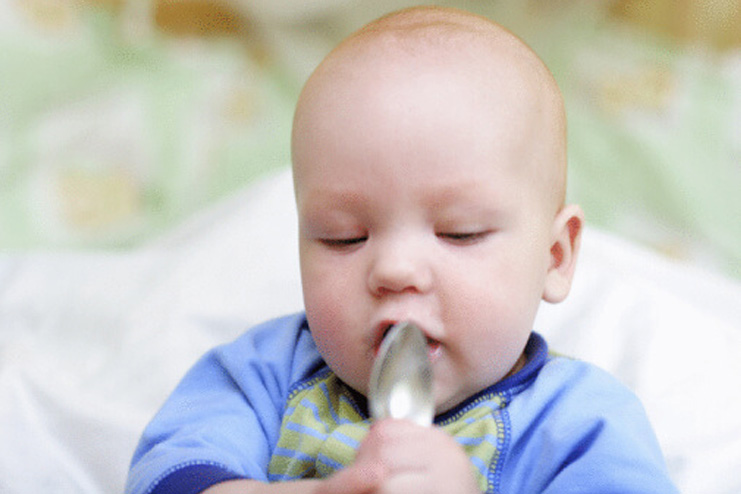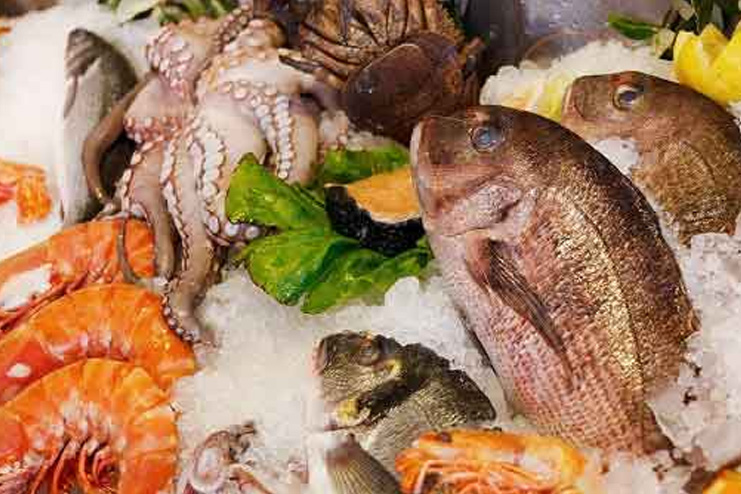New parents are often confused with what kind of solid foods to introduce and when to introduce to their baby? Fish is one among those and there comes another question with the fish, is it safe to introduce? The answer is yes and it is one of the healthy additions when the babies are ready for solid foods.
Fish is one of the non vegetarian sources of protein. Studies show that eating the fish in the infancy especially before the age of 9 months reduces the risk of asthma, eczema, fever, and food allergies. Read this article to know benefits, how to introduce to your baby in a safe manner and some fish recipes for your baby.
Types of Fish:

Different types of fishes and shell fishes are loaded with the different nutrients:
a. Oily Fish:
Oily fishes contain long chain of omega-3 fatty acids that help to prevent the heart attack. They are also good source of vitamin D.
Some of the oily fishes are:
● Herring
● Salmon
● Sardines
● Sprats
● Trout
● Mackerel
● Pilchards
Some of the fishes like whitebait, canned sardines, pilchards, and tinned salmons contain the bones which are the source of calcium and phosphorous that you can eat.
b. White Fish:
Being low in fat they are the healthy alternatives for the red or processed meat which has the high amounts of saturated fat. Sea bass, sea bream, turbot, halibut contain omega-3 fatty acids lower than that of oily fish.
The species that belong to the white wish are:
o Cod
o Haddock
o Plaice
o Pollock
o Coley
o Dab
o Flounder
o Red mullet
o Gurnard
o tilapia
C. Shellfish:
Shellfish are low in fat and a rich source of selenium, zinc, iodine, and copper.
Some of the species that belong to shellfish are:
● Prawns
● Mussels
● Scallops
● Squid
● langoustine
Benefits of Fish for Baby:
Fish is obviously not the first food that comes to mind while you are planning to introduce solid food for your baby. But it is one of the rich nutritious foods that you should think off.
Here are a few benefits of fish for babies:
● It is the source of proteins, micronutrients like iron, calcium, and omega-3 fatty acids which plays a prominent role in the optimal development of the heart and brain.
● It is loaded with the essential vitamins and minerals including potassium, Vitamin B and D2, iodine, and zinc.
● It is beneficial for the development of eyes and keeps them healthy
● It prevents the risk of asthma in infants and children and also reduces the risk of Type 1 diabetes in children.
● Feeding fatty fish like salmon can help to improve the sleep quality.
Which varieties of fishes are safe for babies?
The brainstorming question for the parents is what kind of fishes are really safe for the babies. The FDA and EPA have issued advice regarding the eating of the fish based on the low mercury levels in fish.
The major fact to know about the fishes is that most of them contain the methylmercury a form of the mercury that is toxic and may affect the brain when consumed in the large amounts.
There are some fishes that have the smaller amounts of mercury, even the traces in some cases. These are safe for even small children, and pregnant women. Here is the list of some sea foods that ranks top in the safe fish list from FDA and CSPI.
● Scallops
● Shrimp
● Oysters
● Tilapia
● Mussels
● Catfish
● Sardines
● Clams
● Salmon
● Many types of the white fish are best fishes for babies to eat, they include cod, haddock, plaice, coley, dab, and flounder.
You can find out the complete chart in the official FDA site.
Fishes that are not good:
The biggest worry surrounding the consumption of the fish is the mercury levels. Low mercury level is the foremost consideration to consider while choosing the safe fish.
Mercury is generally the naturally occurring substance that is found in the living things and environment, which is usually not harmful when consumed in the low amounts. The industrialization and some of the activities such as burning of the coal are causing the mercury levels to raise in the fishes. This issue is more in the larger predatory fish as they eat the small fish, which may further worse their mercury levels.
● Shark, swordfish, and marlin are not recommended for your baby as they have the high amounts of mercury. They may adversely affect your baby’s nervous system and should be avoided till your child is a teenager.
● Tuna can be high in mercury, so it is good to limit and aim for the one to two servings per week.
● Sea breams, bass, turbot, halibut, and rock salmon may contain the levels of the pollutants similar to the oily fish and their consumption should be limited.
When To Feed Baby Fish?
Fishes are usually healthy parts of the child’s diet that can be introduces as soon as they start the solid foods. You can offer them fish at the age of 6 months in small quantities only when they are comfortable with the other solid foods.
It is recommended to check with your doctor as fish is one of the top allergenic food. Start with the vegetarian food and once your baby is comfortable with them move to the non vegetarian foods.
If you are planning to feed fish to your baby between the ages of 4 and 6 months, then it is must to consult with your doctor.
How To Introduce Fish To Baby?

Introduce any new solid food to the baby at the slow pace. Make sure to offer only de-boned and well cooked fish for your baby. Once the cooking is done mash it recheck for any kind of bones.
Give your baby just few teaspoons for the first few feeds and make sure to not to feed your baby with the variety of the fishes at the same time. Feed them with one type of fish one time and move to the next variety only after checking their response. You can blend the fish with the other items that your baby started to eat. Pureed or the mashed vegetables like potato, peas, and carrots are the good combination to use with the fishes. Mixing the fishes with rice, lentils, or the other cereals is also a good choice.
Steamed fish is best to offer your baby as it can digest well. Shallow frying or baking are the alternatives. You can fry the fish by adding the turmeric powder as the marinate and add to their diet only after deboning and pureeing. National Health Service (NHS) recommends that steamed, baked or grilled fish is better option to choose than the fried fish because, fat content of the fish and shell fish is increased through frying process when they are cooked in the batter.
Wait for four to five days to observe for the allergic reactions to the fish and then offer the new food. Make sure to offer any allergenic food to your baby for the first time when you are at the home and don’t prefer to offer them at the day care, restaurant, and when you are out of town.
Here are a few choices to introduce fish to your newborn.
1. Baking the fishes with the light lemony sauce gives the good flavour and mash it to make the puree. To get the more body, you can use the vegetable puree, rice or the cereal that you usually feed your baby.
2. If you want to introduce the fish in the form of the finger foods that are more interesting, then fish sticks, fish fingers, and fish cutlets are the good choice.
3. You can make out a fish soup which is nutritious with some added pulses and vegetables.
4. Light fish curry with the fresh herbs and mild spices is good to serve with the rice.
5. Cooked and mashed fish puree can be used as a filling for sandwiches, parathas, and fish dosa. This is one of the best ways to introduce fish to the baby.
6. Its good choice to add the cooked fish puree to dal, kichadi, mashed potatoes, or vegetables.
Risks of Feeding Fish To The Baby:
Though there are many amazing benefits of the fish. Some of the environmental contaminants may turn them dangerous foods. Shark, swordfish, or marlin are not recommended for the children under the age of 16 as they can adversely affect the nervous system.
Fish flesh is contaminated badly these days leading to cancer and brain degeneration. It is one of the more potential foods that make you sick with the bacterial contamination. Fish is liver in water that is contaminated to the greater extent that you would never think of drinking it.
Researchers at the university of Illinois noted that the fish eaters who have the high levels of PCBs in their blood have the difficulty in recalling the information that they have learned 30 minutes back. Fishes are likely to absorb more toxic chemicals and become more concentrated when they move up the food chain. Fish flesh can store the contaminants such as PCBs that cause the liver damage, nervous system disorder,
Radioactive substances like strontium 90, and the other dangerous contaminants including cadmium, mercury, lead, chromium, and arsenic can cause various health problems including kidney damage. It was noted that seafood is the most poisoning in the United States.
How Much Fish Should Baby Eat?
Once your baby is comfortable with the solid food, start feeding them 2 ounces of fish that is low in mercury per week. For the babies who are not breastfed, you can offer 6 to 7 ounces of the fish per week.
Fish Allergy To Baby:

People with the fish allergy may show the symptoms for some fishes and not for all the fishes. Most of the fish allergies when the people eat while some others may show reactions even on touching or breathing in the vapours from cooking the fish.
Fish allergy may develop at any time even with the fish that they ate in the past. Some others outgrow the fish allergies with time and that are known to be carried for the rest of their lives.
The allergic reaction to fish makes the immunity system of the body to overreact with the proteins of the fish. Due to this reaction, whenever the person eats the fish, the body releases the harmful chemicals known as histamines thinking that these proteins. This results in the following symptoms:
● Wheezing
● Trouble breathing
● Hoarseness, a condition where there may be changes in the volume and pitch of the voice
● Stomach pain
● Vomiting
● Diarrhea
● Itchy, watery, and swollen eyes.
● Vapours from the cooking fish may trigger the asthma in children
How To Treat The Allergic Reaction To Fish?
For most of the children, the fish allergy is not permanent and they are going to outgrow this. If that was the case, you can try this slowly.
If your child has the allergic reaction to the fish, doctor will recommend you to carry the epinephrine auto-injector. It is a life saving drug that comes in the small size and is easy to use. Your doctor may give you demo on how to use it. Kids who are old enough to understand and have the proper motor skills can give the injection on their own.
How To Prevent Fish Allergies In Babies?
Here are a few tips to prevent fish allergies in babies:
1. If your child has the fish allergy then your child must not eat the fish. It is not recommended for the baby to eat any kind of foods that contain fish as the ingredients.
2. If you baby has smell sensitivity to fish, then it is not recommended to visit the restaurants where the fish are being cooked.
3. Always get to the habit of reading the labels to check for the fish in the ingredients. Some foods seem to be safe from the ingredients side but they may be at the risk of cross contamination due to the contact with the fish. In those cases, you need to check for the advisory statements such as may contain the fish or processed in the facility where the fish is also being processed.
4. Fish is more commonly used in many Asian dishes. so Chinese, Vietnamese, Thai or Japanese restaurants are at the risk of cross contamination due to the contact with fish. So, it is good to avoid the fries from these restaurants as some of the restaurants may use the same oil to fry chicken, French oil, or the fish.
Tips For Buying and Cooking The Fish:

Here are a few tips to consider when you plan to buy and cook the fish.
● Check for the freshness of the fish as it gets spoiled easily once taken out of the water.
● Start to buy the fish from the species of pomfret, trout, cod or sole as they are easy to digest and babies are rarely show allergic reactions.
● Pick the fishes with shining and clean look. If the skin of the fish look dull and patchy then it is not fresh.
● If you touch the outer skin of the fish, it should be firm to touch and it should spring back without leaving a pit.
● The eyes of the fish should be shiny, clear, and bulgy. Cloudy or sunken eyes are the indicators of lack of freshness.
● The gills of the fish should be deep pink or red and they should not be dry. A fresh fish gives ammonia like pungent smell.
● While buying the frozen fish ensure to check that the package has no open edges. If the frozen fish is not properly stored, it bends.
● Ensure to clean the fish thoroughly before cooking.
Here are a few tips to cook fish for the baby:
● Steamed, grilled, or baked fish is healthier. fat content of the fish increases when it is fried.
● Never try to defrost the fish at the room temperature. If you want the cook the fish the next day keep it in the lower part of the fridge and use the defrost option if you want it sooner.
● To prevent the risk of choking, offer the fish that is deboned properly and cooked properly. Proper cooking can help to eliminate the food borne bacteria and virus that may survive in the raw or uncooked fish. The fish turns opaque once it is cooked properly.
● Mash the deboned fish thoroughly before offering to your baby.
● Use your fingers to de-bone the fish as the fingers can feel the tiny and thin bones that your eyes can not see. Choose the fleshy piece to make the deboning easy.
● Start with the central bone and then work through the way to eliminate the finer and sharp bones. Keep the bones in a separate dish
● Ensure to wash the utensils used for cooking with the soap and the hot water to make sure that there is no cross contamination.
In conclusion, proper care should be taken while introducing any new solid food to the baby especially the high risk irritants like fish. choosing fresh fish with low mercury content is the key to start introducing fish to your baby.








































